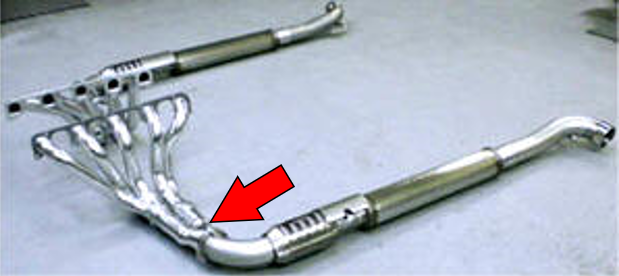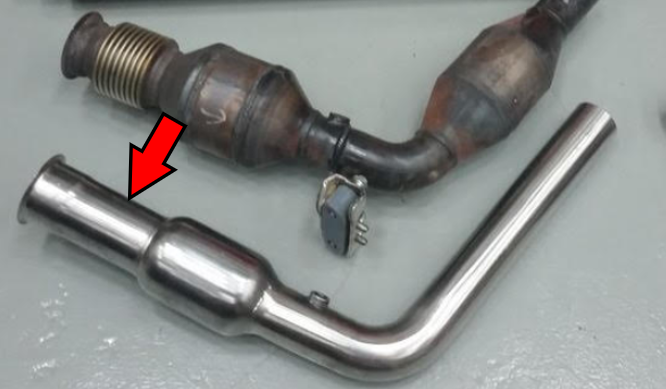Assuming its not as easy as flashing stage 1 or stage 2 like 99.99 percent of the cars out there becuase everyone would purchase it for their Gen 5's myself included. Still don't know why that is but will find a solution hopefully locally if I need someone to custom tune her. This is the software I want? The gains they are showing would be impressive, but again I need to learn how to tune?
https://unleashedtuning.com/hp-tuner...-4-or-5-viper/
Results 1 to 25 of 27
Thread: hp tuners self tuning out there
-
08-22-2019 #1Enthusiast


- Join Date
- Aug 2019
- Location
- SWF
- Posts
- 218
hp tuners self tuning out there
-
08-22-2019 #2Enthusiast





- Join Date
- Oct 2013
- Location
- Dayton, OH
- Posts
- 4,803
You can learn to tune, but you don't have to. Torrie @ Unleashed Tuning can set you up with a base file that will get you most of the way there. If you want the most gains, a custom tune is what you'd want though. He can also do that, but you'll need to be on a dyno.
-
08-22-2019 #3Enthusiast


- Join Date
- Aug 2019
- Location
- SWF
- Posts
- 218
Right on, so his tune is like a basic can tune that helps out with a lot of tweaking from the factory's nanny's? Would be great to see what can be done in stock fashion, already have the heat shield which already I can see the IAT come down. I know that there has to be a good bit left on the table from factory.
Last edited by ViperGTS14; 08-22-2019 at 09:34 PM.
-
08-22-2019 #4Enthusiast





- Join Date
- Oct 2013
- Location
- Dayton, OH
- Posts
- 4,803
Basically, yes. There's definitely room for improvement over the factory tune, even with the stock equipment.
-
08-23-2019 #5Enthusiast


- Join Date
- Dec 2014
- Location
- Outside of Charlotte
- Posts
- 1,708
I had Torrie's tune and I wouldn't say it's "canned". You go to a dyno and Torrie get's to see the performance of the car on the dyno, and makes adjustments accordingly. He does this on the fly after each pull until he gets it where he wants. The difference is night and day.
-
08-25-2019 #6Enthusiast



- Join Date
- Oct 2013
- Location
- Ohio
- Posts
- 3,889
Opinion - whether you use a tuner or you self tune you want to install a wide-band, especially, if you self tune, you need the the wide-band.. The Innovate products are excellent and provide better results than most dyno's due to placement. Another issue is the AF on a dyno and track are diff.
-
08-25-2019 #7Enthusiast


- Join Date
- Aug 2019
- Location
- SWF
- Posts
- 218
-
08-25-2019 #8Enthusiast


- Join Date
- Feb 2019
- Location
- CT
- Posts
- 736
-
08-25-2019 #9Enthusiast


- Join Date
- Dec 2013
- Location
- Orlando, FL
- Posts
- 1,425
Remote tuning is another option for the HP tuners. I've done this a couple thousand miles away with Todd @ A&C before with great results. You could always learn it yourself but hiring a pro that tunes vipers for a living seems like the safer option IMO.
-
08-25-2019 #10Enthusiast



- Join Date
- Oct 2013
- Location
- Ohio
- Posts
- 3,889
You have to pull the turn-out on both Belanger and ARH. Lift the car to locate the position. The location has to be accessible for removal. The passenger side is best. Access into the cabin is the flat area in front of the cowl or under the weather strip at the door front.
-
08-25-2019 #11Enthusiast


- Join Date
- Aug 2019
- Location
- SWF
- Posts
- 218
So where would the bung go for the Wide Band? can someone show me where to get it installed?
Screen Shot 2019-08-25 at 6.54.33 PM.png
-
08-25-2019 #12Enthusiast





- Join Date
- Oct 2013
- Location
- Dayton, OH
- Posts
- 4,803
With headers you'd put it right about where the collector is, before it turns the corner into the catalytic converter.
These are Belangers:

Or if you want to keep running the stock exhaust manifolds, you'll need to source some high flow cats (that's why I run them on mine). As you can see from this picture I shamelessly stole from timberwolf, where you'd want to put the pre-cat wideband is right where the flex section is on the stock exhaust:

-
08-25-2019 #13Enthusiast





- Join Date
- Oct 2013
- Location
- Dayton, OH
- Posts
- 4,803
As you can see in my post above, installing it in the stock exhaust is not really possible due to the flex section right before the primary catalytic converter. That's why I had to switch to high flow cats, since they get rid of that flex section. I just had Lou Belanger add an extra bung before they shipped them...I also had him imply that I was an idiot for even wanting a wideband on the car for tuning (according to him it wouldn't tell me anything useful), but he installed it nonetheless.
Innovate makes a fine product (I used one in the past on my old Camaro), but I think AEM makes a better product. More specifically, their 30-0334:
https://www.aemelectronics.com/produ...and-uego-obdii
With most widebands, you end up having to use an analog output for the 0-5V wideband signal. What most fail to account for are the ground offsets...I chased my tail for years with this issue on my Camaro, and there's really not much you can do about it. Because of that, I would usually end up with an AFR that wasn't quite where I wanted it. Close, but not quite close enough for me.
What the AEM lets you do on newer cars is output the DIGITAL signal (not analog) from the wideband on to the CAN BUS. The very LONG story is here:
https://forum.hptuners.com/showthrea...hlight=03-0300
To summarize, it dumps that data on to the BUS as a PID...that PID doesn't actually get used by anything on the network (it's an unused address on our cars), but HPTuners recognizes it, and can pull it in just like it can any other PID. Since it is digital, there is no analog ground offset you have to worry about, and you can poll the data at up to 100 Hz (10 millisecond intervals). That gives you a ton more data to work with, which means you only have to make 1-2 full pulls to get all the data you should need to get your AFR in line. Because of that, I've been able to get my AFR to about 0.01% of where I'm commanding.
YMMV, but it sure made tuning a lot easier for me.
-
08-26-2019 #14Enthusiast



- Join Date
- Oct 2013
- Location
- Ohio
- Posts
- 3,889
That comment from Lou comes from someone who has not changed their headers since the G1. In addition, for those who have not used a WB, an AF Gauge is worthless, you have to log, the log trace is an average of the AF.
You can log into an Innovate storage device or as Steve Indicated you can bring it into HPT. The caveat is, I do believe anyone has used the HPT logging function on a G5, if someone has, let us know.
Last edited by Jack B; 08-26-2019 at 08:27 AM.
-
08-26-2019 #15Enthusiast


- Join Date
- Dec 2013
- Location
- CANADA
- Posts
- 599
I think the Innovate systems still use the crappy Bosche wide-band sensors.
Go with AEM or Holley. Then you can use the NTK wide-band sensor. Much more durable.
-
08-26-2019 #16Enthusiast



- Join Date
- Oct 2013
- Location
- Ohio
- Posts
- 3,889
-
10-22-2019 #17Enthusiast


- Join Date
- Aug 2019
- Location
- SWF
- Posts
- 218
Damn, just back tracked on this thread and I'm pissed at myself for not taking to Jon about requesting adding a bung to the high flow cat pipes I just ordered. These should be an option for customers. Oh well :-(
-
10-23-2019 #18Enthusiast





- Join Date
- Oct 2013
- Location
- Dayton, OH
- Posts
- 4,803
-
10-23-2019 #19Enthusiast


- Join Date
- Apr 2019
- Location
- Northern CA
- Posts
- 727
damn I better get one ordered...
-
10-23-2019 #20Enthusiast


- Join Date
- Apr 2019
- Location
- Northern CA
- Posts
- 727
The o2 a standard M18X1.5?
-
10-23-2019 #21
-
10-23-2019 #22Enthusiast


- Join Date
- Apr 2019
- Location
- Northern CA
- Posts
- 727
-
10-23-2019 #23Enthusiast





- Join Date
- Oct 2013
- Location
- Dayton, OH
- Posts
- 4,803
-
10-28-2019 #24Enthusiast


- Join Date
- Aug 2019
- Location
- SWF
- Posts
- 218
HP tune from Torrie is now flashed to our GTS. Thought I needed to do a throttle calibrations on the gen 5's but I'm guessing it wasn't needed since no errors and she idles fine. Other wise it wasn't to difficult, a little tricky with understanding where to go where and do what. Torrie seems on the ball. Now I need to wait for this rain to go away and give some testing to her. Would love to give a look at some of these important tables and start seeing what was changed or what can be alter (not going to change anything just want to look ;-) lol). Hopefully the first tune he sent is spot on, not going for ever last HP not majorly concerned about doing data log runs with a wide band. If there seems to be an issue I'm assuming I'll bring her to a dyno and have Torrie remove tune... Fingers crossed its not needed. BTW my RPM issue of 1000 rpm at idle is now at 890-900 :-)
Last edited by ViperGTS14; 10-28-2019 at 08:51 PM.
-
10-28-2019 #25Enthusiast



- Join Date
- Oct 2013
- Location
- Ohio
- Posts
- 3,889
Your oem tune is saved, it is easy to go back.
The problem with doing WOT logs is the fact you do not have a WB to watch the A/F, these cars run almost a point diff from dyno to track. Another issue is, you really want to log Knock Retard (KR). I am not quite sure you can be nice.access the enhanced PID's with a G5, the KR is an enhanced PID. When i was using HPT I could not access KR as you can on a G4, however, a newer release of HPT may now have this capability.
If you can access KR, find a load type dyno such as a Mustang, you can easily dial in the max timing, therefore, max power. A WB would also be nice.
Last edited by Jack B; 10-28-2019 at 11:17 PM.



 Reply With Quote
Reply With Quote

Bookmarks